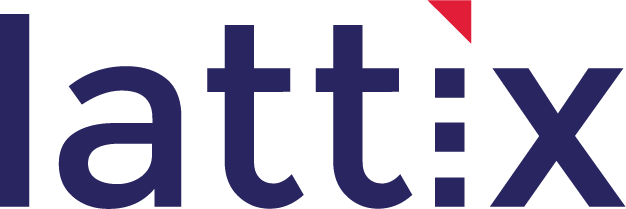Release 2#
Lattix LDM Release 2.7.5#
Fixed some erroneous dependencies between .NET assemblies.
Lattix LDM Release 2.7.2#
Added new command line options to ldm.exe. Type ‘ldm.exe -help’ to see options.
Fixed JVM startup in ldm.exe and ldc.exe.
Fixed support for .NET generics.
Lattix LDM Release 2.7.1#
Fixed memory leak in Project Update
Lattix LDM Release 2.7#
New Module for .NET
Lattix LDM can now be used to create dependency models for .NET applications.
The Doxygen plugin was incorrectly filtering out dependencies related to function prototypes.
Moving boxes in conceptual architecture could cause other boxes to move in an unpredictable way.
Manual dependencies could disappear in a Java plugin when a class is expanded to member level.
Fixes related to partition names for classes which did not have a package or namespace.
Lattix LDM Release 2.6#
New Module for Doxygen: A wide variety of C/C++ compilers are supported through the use of the popular open source project doxygen. Lattix LDM will now take the output of doxygen to create the DSM.
Improved SDK for Plugins: The SDK for plugins has been improved to allow plugins to be created completely independently, including support for independent loads and documentations.
Keyboard shortcuts are now supported for most common operations.
A Find menu item has been added to the View Menu.
Context menus were not appearing under Eclipse in Linux. This has been fixed.
Performance improvements include reducing the memory footprint for large projects.
You can now export images to both JPG and PNG format.
Lattix LDM Release 2.5#
Eclipse Integration: This releases provides a plugin for integrating into the Eclipse Platform Version 3.1. This integration allows developers to visualize the architecture from within Eclipse. As code is developed, the architecture is updated simultaneously and any code that might be violating the design rules is identified immediately. The users can now bring up the code associated with any partition in the DSM. The integration also includes support which enables development teams to maintain the architecture collaboratively.
Conceptual Architecture: The auto layout feature in conceptual architecture allows users to create conceptual architecture rapidly. The DSM partitioning in conceptual architecture organizes the conceptual architecture based on virtual partitions and the dependencies within the subsystems.
BSC Support: Dependency kinds are now supported. As a result, user can identify each dependency for what kind it is. User can also filter for specific kinds of dependencies. This release also includes improvments to allow users to resolve ambiguities when symbols appear to be multiply defined in files because of the way C/C++ builds are done. There is additional support to allow users to specify external files and symbols.
Image Export: You can export both the DSM and the Conceptual Architecture images in jpg format using the Report function.
Lattix LDM Release 2.0#
New BSC Module: This releases introduces the ability create a Lattix LDM project from a C++/C system, and manage that system’s architecture.
Worklist: DSM Editing changes (moving, renaming, creating, and deleting subsystems) are now captured in a list. Once you have moved your what-if changes to the level of a new “should-be- architecture, you can then use the worklist to coordinate the tasks for actually modifying your codebase. You may also assign an owner and a priority to a worklist item.
Architecture Metrics: A variety of metrics related to architecture are calculated and available in the Tab pane of Lattix LDM.
Member Level Dependencies: In some instances, it is necessary to examine a dependency model all the way down to the method and data member levels of a system. This is useful for gathering information to split up large classes, or classes that play prominently in dependency hubs or in tangles.
Dependency Kinds: This release now captures information on different kinds, or categories, of dependencies. That is this release captures dependencies separately for Invokes, Inherits, Constructs, Object Ref, and Data Member refs. You can filter dependencies our of the DSM based on the kind of dependency. To access this feature, see “Filter Dependencies…” under the “View” menu.
Project Creation Wizard: Creating a project from multiple input files is significantly easier with the new Project Creation Wizard. This wizard walks you through the steps to choose input files, and for setting appropriate project settings.
Hints to Remove Dependency: As part of the analysis capabilities of Lattix LDM, it can now calculate if there is a way to remove a dependency by simply re-organizing the classes involved in the dependency. You can find this feature by clicking on a cell in the DSM, and then right-clicking to see the context menu for that cell.
Provider Proximity: The DSM partitioning available in Lattix LDM will discover that a subsystem is perfectly Lower Triangular, or calculate its Block Triangular form. However, the resulting grouping, including the resulting virtual subsystem definition is sometimes not optimal. Specifically, the algorithm does nothing to group modular components. Lattix LDM now supports an alternate partitioning, Provider Proximity, which does group subsystems that provide more closely with the subsystems that depend on them.
Sourcefile viewer: You can now launch a sourcefile viewer from within Lattix LDM, by right-clicking on a Class subsystem and choosing the menu item “view source-.
Flagging a cell, adding cell properties: You may flag a cell for special attention, and provide textual description for that cell.
Additional Reports to Excel:
WorkList
Flagged Dependencies
External Use Libraries
Violation Report
Metrics
